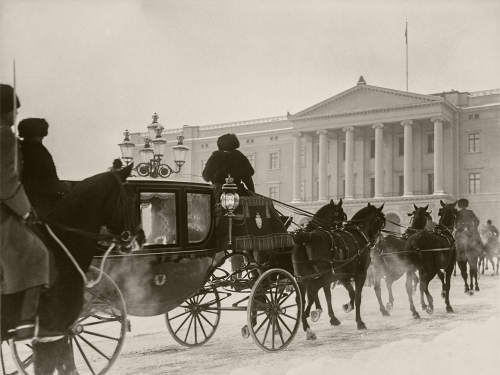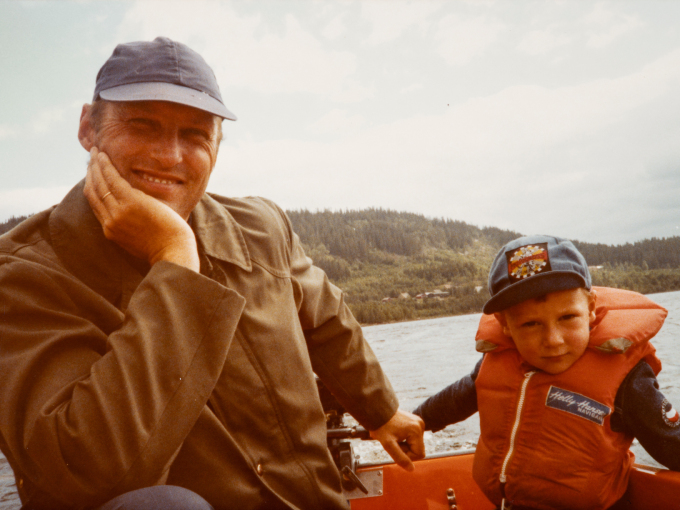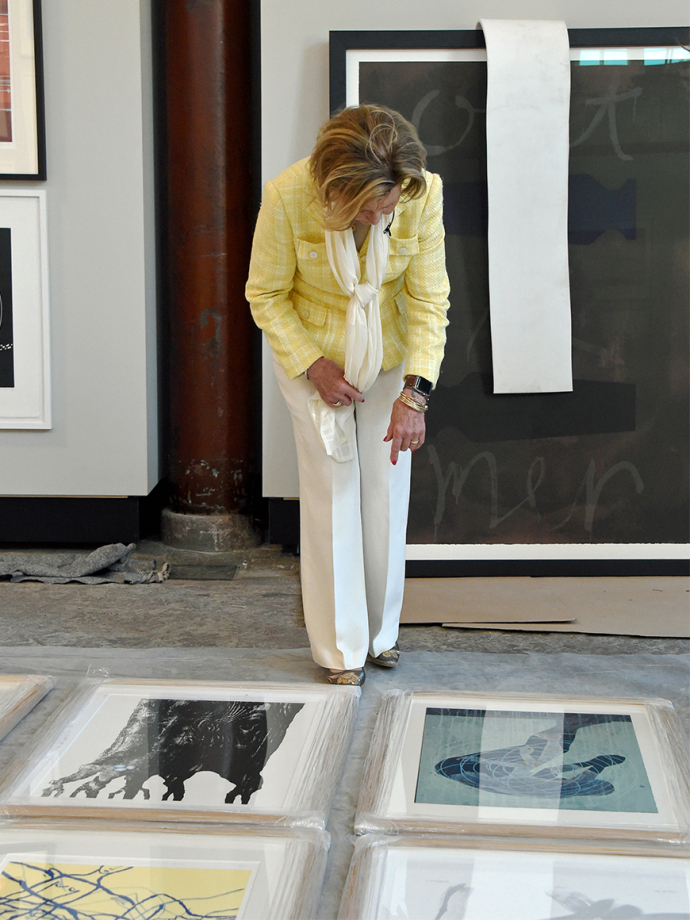The Queen Sonja Art Stable
Queen Sonja Art Stable is located in the former Royal Stables. These buildings are part of the Palace that has not previously been open to the public.
The Royal Stables are worth a visit in their own right. Renovated for the opening of the Art Stable, the stables now appear as they did in their heyday - in the interwar years when King Haakon and Queen Maud kept their horses here.
Changing exhibitions are mounted in the Art Stable.
Current exhibition: Royal Photographers
The Royal Family is Norway's most photographed family. But what kind of pictures do they take themselves? The exhibition “Royal Photographers” opened on 16 February 2024, showing photos taken by members of the Royal Family – from Queen Maud and King Haakon until the present King and Queen.
Photo taken by Her Majesty Queen Sonja of then Crown Prince Harald and Prince Haakon.
Also...
In Ridehuset, 43 banners from Oslo schools, created between 1886 and 2016, are on display.
Banners exhibited in "Ridehuset". Photo: Øivind Möller Bakken, The Royal Court
Earlier exhibitions
The first exhibition in Queen Sonja Qrt Stable opened 4 July 2017. Here are some of the exhibitions so far:
- Craftmanship at the Royal Palace
- The King's Cars. Automobiles over four generations
- An Audience with Art. The National Museum in Queen Sonja Art Stable
- Histories. Three generations of Sami artist
- Tone Vigeland. Jewellery and Sculpture
- Tradition and inspiration
- The Royal Stable. Horses and their equipage 1905–1940
- The Art Stable is open
The Royal Stables
The Royal Stables were built between 1845 and 1848 according to designs from Palace architect H.D.F. Linstow. King Haakon and Queen Maud expanded the facilities in 1911. British-born Queen Maud was an accomplished equestrian, and the stables were remodelled based on those at Buckingham Palace, the Royal Mews. The expanded stables provided a number of new functions, including an equestrian arena with a spectator gallery and bandstand, a shoeing forge and infirmary stalls.
 The coronation carriage returning to the Palace after a visit to the Storting, January 1932. The Royal Stables had room for 38 horses. Photographer: Carsten Sætren, The Royal Collections.
The coronation carriage returning to the Palace after a visit to the Storting, January 1932. The Royal Stables had room for 38 horses. Photographer: Carsten Sætren, The Royal Collections.
On Queen Maud’s initiative, a British stable master was hired. At one point, there was a staff of 13 grooms living in the accommodations above the centre stable building. The centre stable could house 38 horses as well as carriages, saddles and harnesses.
After Queen Maud’s death in 1938, the practice of keeping horses declined. The last horses were removed from the Royal Stables shortly after the outbreak of war in 1940. When the Royal Family returned to the Palace in 1945, it was by car. The era of the horse had ended.
 The former stalls have been retained as part of the interior as the building was adapted to become the Art Stable. Photo: Jan Haug, The Royal Court.
The former stalls have been retained as part of the interior as the building was adapted to become the Art Stable. Photo: Jan Haug, The Royal Court.
A new era
The use of this venue was a gift to Her Majesty Queen Sonja from His Majesty The King. The Royal Stables had been used for storage since World War II. Now the building was to be converted into an arena for art and culture.
The Queen Sonja Art Stable officially opened on the Queen’s 80th birthday, 4 July 2017, and was opened to the public on 5 July.
The opening of the Queen Sonja Art Stable marks the beginning of a new era for the stables. Where the horses once stood in their stalls, the public can now enjoy art and history.



 Enlarge
Enlarge



